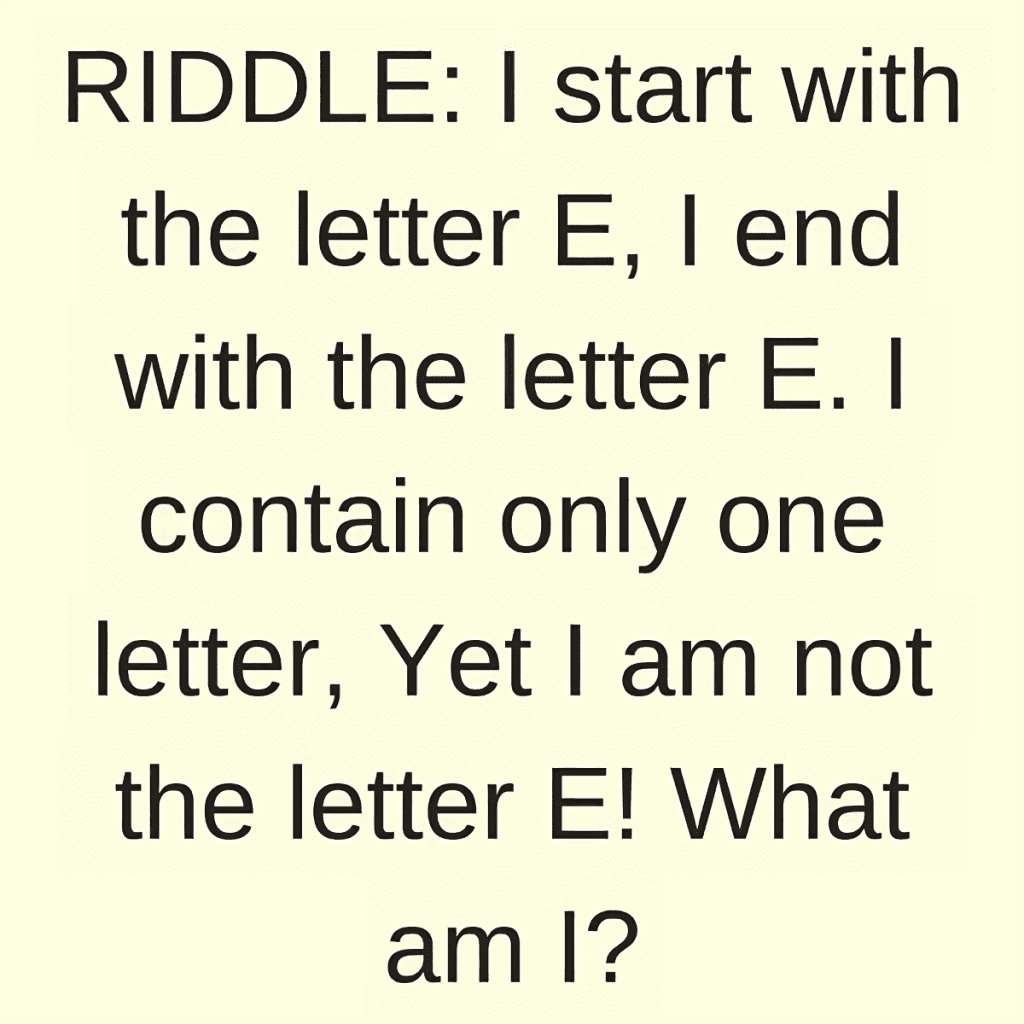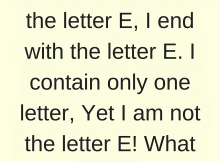Solving riddles is more than just a fun pastime—it’s a test of intellect, creativity, and lateral thinking. The feeling of triumph when you crack a riddle is like unlocking a mental treasure chest, revealing your inner genius. One of the most intriguing riddles that has captivated minds for generations is about a word that begins and ends with the letter “E,” contains only one letter, yet is not the letter “E” itself.

Let’s delve into this riddle, analyze its clues, and explore how it challenges our perception of words and logic.
Decoding the Riddle: The Mystery Begins
The riddle goes like this: “What word begins and ends with the letter ‘E,’ contains only one letter, but is not the letter ‘E’ itself?” At first glance, this riddle seems contradictory. How can a word that contains only one letter start and end with an “E”? To solve this mystery, we need to break down each clue step by step.
Clue 1: A Word Starting and Ending with ‘E’
The first part of the riddle tells us that the word must start and end with the letter “E.” This detail immediately narrows down our options. We begin to think of words like “eagle,” “engage,” or “expose,” but none of these fit the other criteria of the riddle.
Clue 2: Contains Only One Letter
This clue adds an unexpected twist. How can a word that starts and ends with “E” contain only one letter? Here, the riddle plays on the dual meaning of the word “letter.” Instead of referring to alphabetic letters, it points to a different kind of letter—specifically, a letter that is sent by mail.
Clue 3: Not the Letter ‘E’ Itself
The final clue clarifies that the answer is not simply the letter “E.” This eliminates any straightforward interpretations and encourages us to think outside the box.
The Clever Solution: It’s All About the “Envelope”
By combining all the clues, we find that the answer to the riddle is the word “envelope.” Let’s break down why this works:
- Starts and Ends with ‘E’: The word “envelope” begins and ends with the letter “E.”
- Contains Only One Letter: An envelope contains a single letter inside (as in a letter you mail).
- Not the Letter ‘E’: The envelope itself is not the letter “E,” but rather a container for a letter.
This solution is a perfect example of how language can create puzzles that challenge our conventional thinking.
The Power of Wordplay: Why This Riddle Works
The “envelope” riddle is more than just a simple puzzle; it’s a masterclass in wordplay. It forces us to shift our perspective and consider alternative meanings of words. The beauty of this riddle lies in its ability to blend literal and metaphorical interpretations, showing us how flexible language can be.
Ambiguity and Multiple Meanings
At its core, this riddle leverages the ambiguity of the word “letter.” In everyday use, we think of letters as the building blocks of words, but they can also refer to written messages that are mailed. This dual meaning creates the element of surprise that makes the riddle so effective.
Engaging the Mind in Creative Thinking
Riddles like this one encourage us to engage in creative thinking, shifting between different interpretations until we find the one that fits. The process of solving the riddle involves looking beyond the obvious and exploring less conventional ideas—an essential skill in both language and problem-solving.
Conclusion: Embrace the Challenge of Riddles
The riddle of the “envelope” is more than just a word puzzle—it’s a celebration of language’s complexity and creativity. It demonstrates how words can be twisted, reinterpreted, and explored in ways that surprise and delight us. By embracing riddles like this one, we train our minds to think more flexibly, approach problems with an open mind, and appreciate the power of words.
So, the next time you encounter a riddle, don’t shy away. Let your mind wander, explore different possibilities, and enjoy the journey of discovery. Solving a riddle isn’t just about finding the right answer—it’s about the thrill of unlocking hidden meanings, understanding the nuances of language, and celebrating the brilliance of the human mind.

